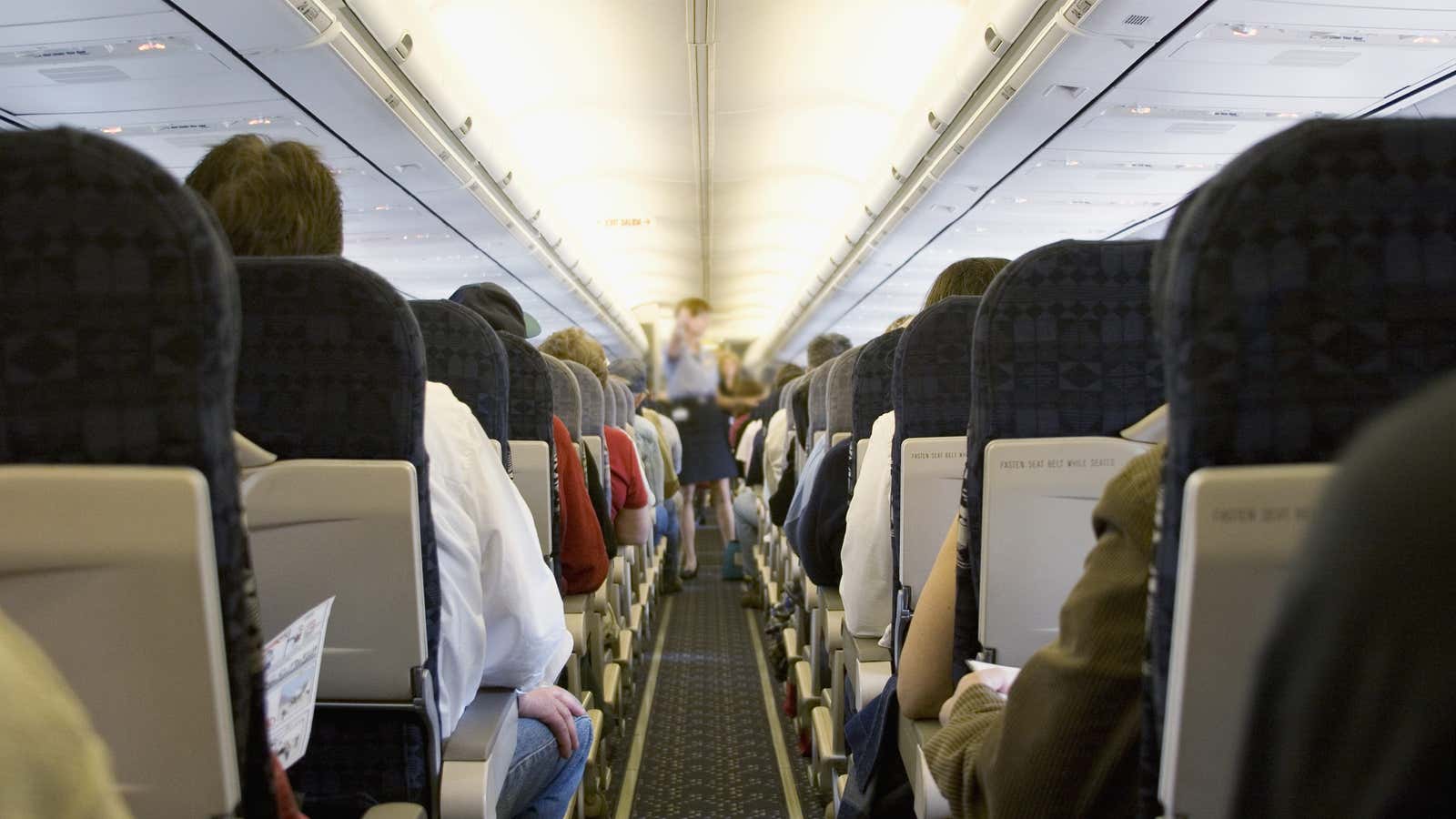There are good reasons not to travel right now. Self-quarantine keeps you and other more vulnerable people safe; limited social contact has so far proven to be the best way to “flatten the curve” of the spread of the new coronavirus. And if you have even a slightly sore throat, it’s definitely worth staying home and minimizing the risk.
But if you must travel, there’s no real reason to avoid airplanes, compared to any other form of transport where multiple people are in close proximity to one another, such as a bus, train, or subway car.
There’s a common misconception that “recirculated air” in airplanes makes people more likely to get sick. In modern planes, that simply isn’t true. Nowadays, airplanes have hospital-grade HEPA filtering systems that entirely recirculate the air in the cabin every three minutes. While flying, the air coming out of the air vent is actually a mixture of filtered fresh and recirculated air, where the recirculated stuff increases the air humidity—and your comfort. It may even be healthier than in most office buildings, schools and residences, according to one 2017 study examining air quality in 69 flights.
Writing on his site Ask The Pilot, author, airline pilot, and aviation blogger Patrick Smith has a more technical break-down:
The supply is bled from the compressor sections of the engines. Compressed air is very hot, but the compressors only compress; there is no contact with combustion gasses. From there it is plumbed into air conditioning units for cooling. It’s then ducted into the cabin through louvers, vents, and the eyeball gaspers above your seat. The AC units are known to pilots as “packs.” That’s an acronym for pneumatic air cycle kit. Usually there are two per plane.
The air circulates until eventually it is drawn into the lower fuselage, where about half of it is vented overboard—sucked out by the pressurization outflow valve. The remaining portion is remixed with a fresh supply from the engines and run through filters, and the cycle begins again.
While Smith acknowledges that the low-humidity air can be bad for your sinuses, he advises passengers to exercise more concern about touching frequently-trafficked surfaces such as lavatory door handles, tray tables, and armrests. This is more an occasion for hand sanitizer, he writes, than it is for high-end N95 masks.
On the plus side, since the outbreak began, airlines such as JetBlue and Delta have introduced more stringent deep-cleaning procedures above and beyond what was already in place. But there’s no harm in making like Naomi Campbell and bringing your own disinfectant wipes. And whatever you’re doing, make sure you wash your hands.
